Benefits of Using a Static Code Analysis Tool in your Next Upgrade Project
My team and I were upgrading an OSS project for research purposes, and this blog
was written after the actual upgrade was done. Here we will highlight why the
step of inspecting the application with SonarQube-like tool is essential and
what we missed because we should have checked it during the upgrade project.
The stack
This is the stack that the application used:
dockertypescriptnode.jsexpress.jsreact.jseslintjavascriptjestcypress@cypress/code-coveragemwizner/sonarqube:8.9.5-communitysonarqube-verify
Statistics from the branch before the upgrade
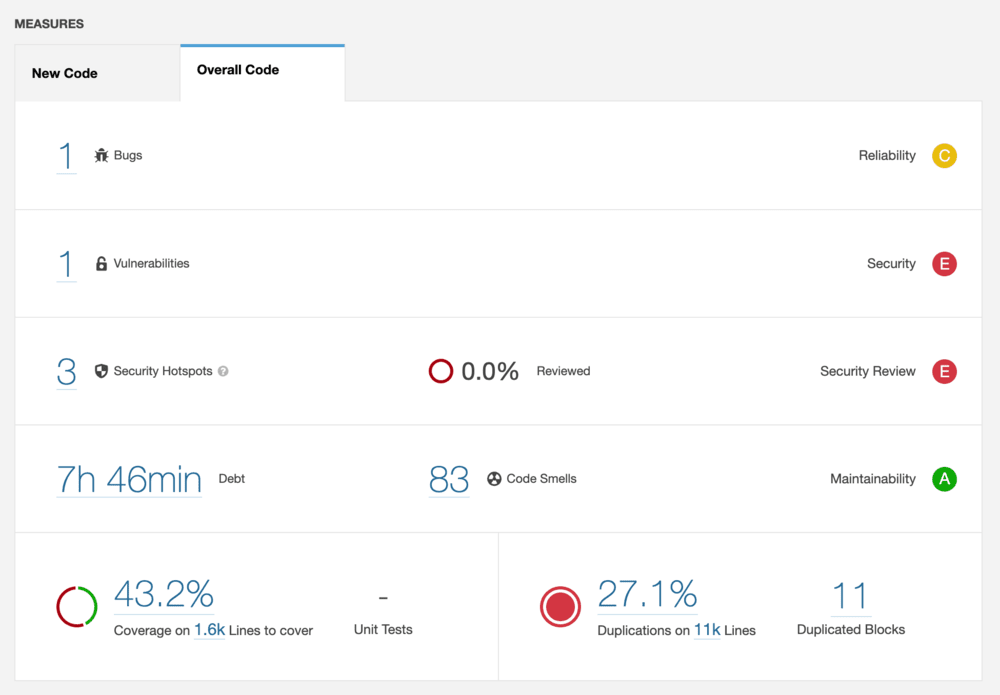
Before we begin, I want to mention that by using
SonarQube , you can pretty
easily explore the test code coverage data from multiple sources at once.
For example: jest & cypress as a single report. We recently published a blog
post on combining code coverage data from jest & cypress tests
and displaying it in a single report.
In the screenshot you can see that this project had a couple of problems. Let’s look at what it shows and what problems we can eliminate.
Bugs
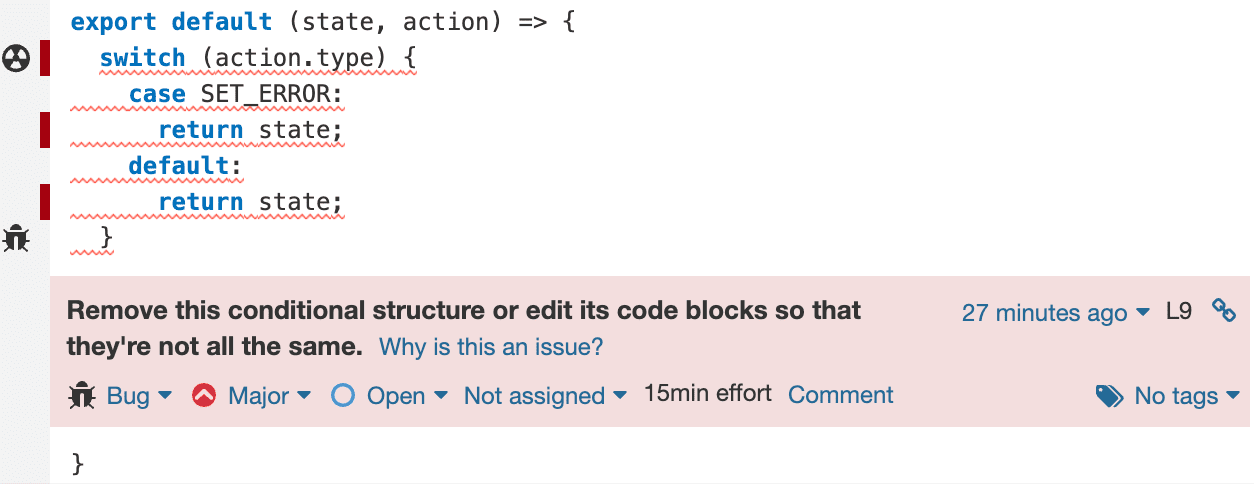
From this screenshot, you can see the example of a possible bug in the code. In the following one, you can see the explanation of how we can fix it and why it appears as a bug in the report.
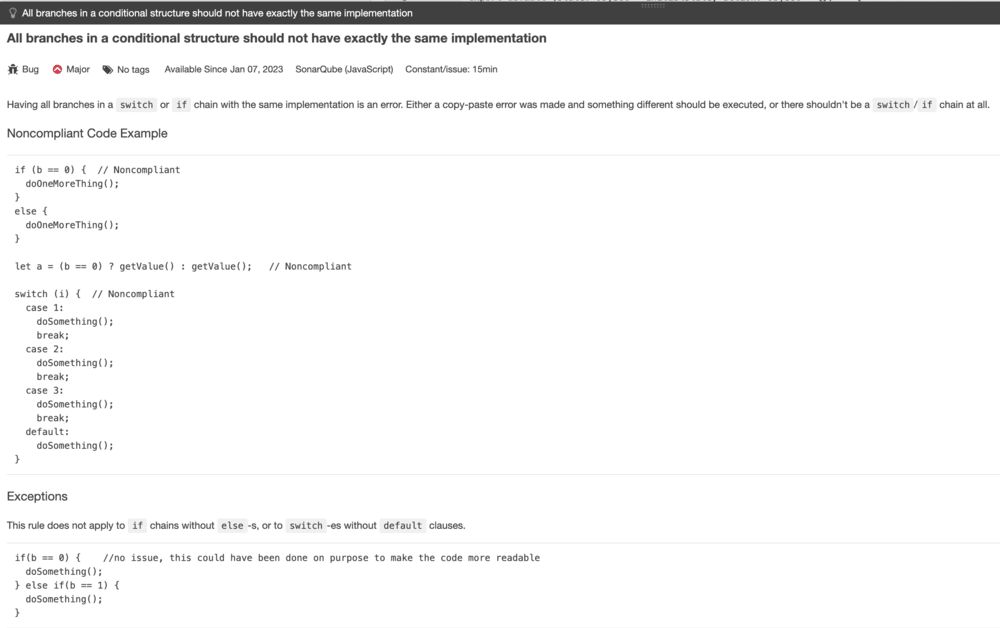
Vulnerabilities
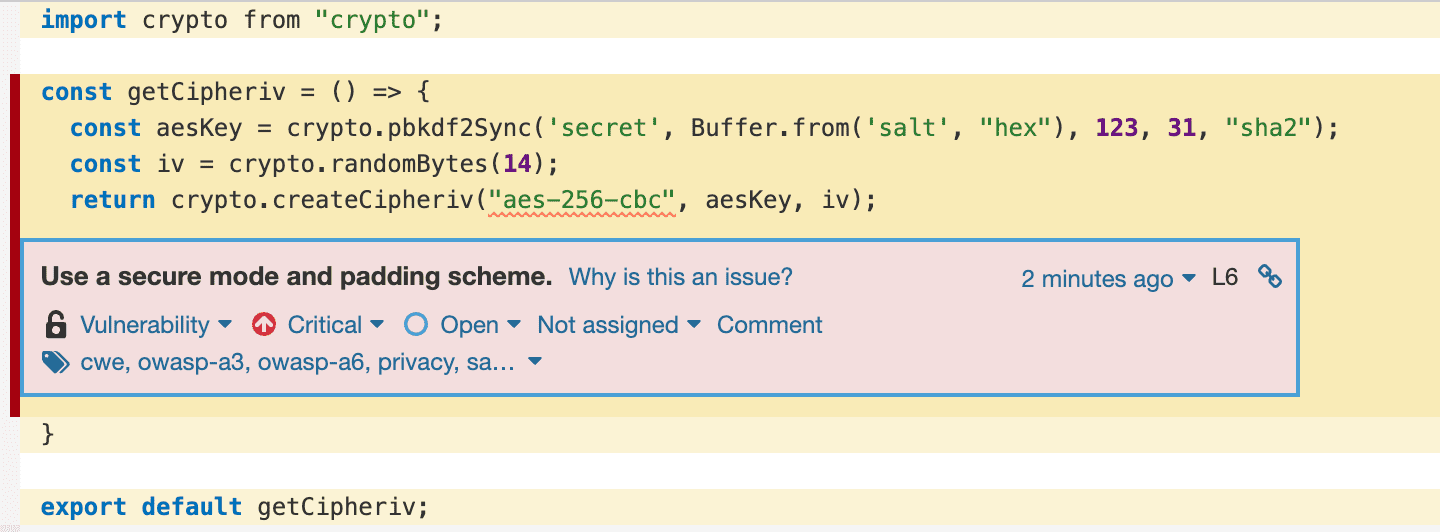
Here you can see the vulnerability resulting from the outdated usage of the
Node.js built-in library.
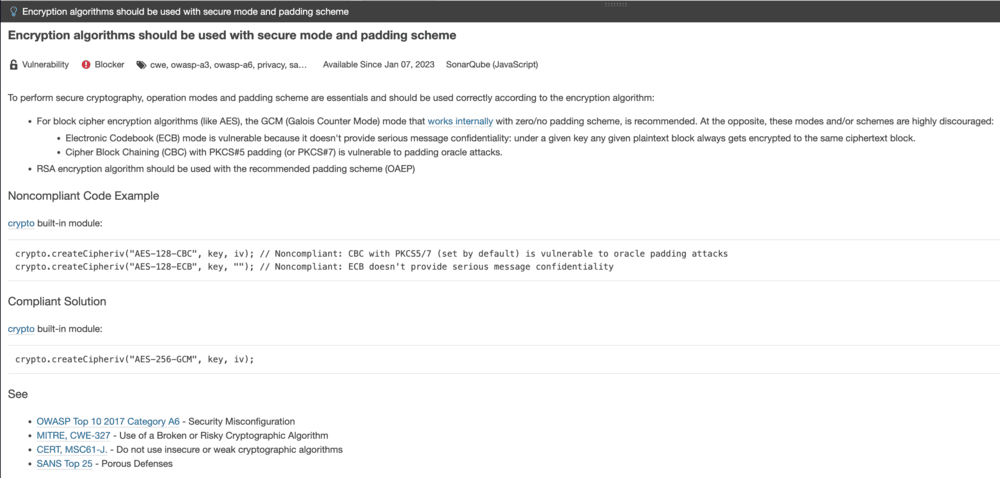
SonarQube is a great tool to check your code for known vulnerabilities. Another
great feature is that it shows you possible ways to resolve the problem.
Security Hotspots
If you are wondering how smart this tool is, here is a great example:
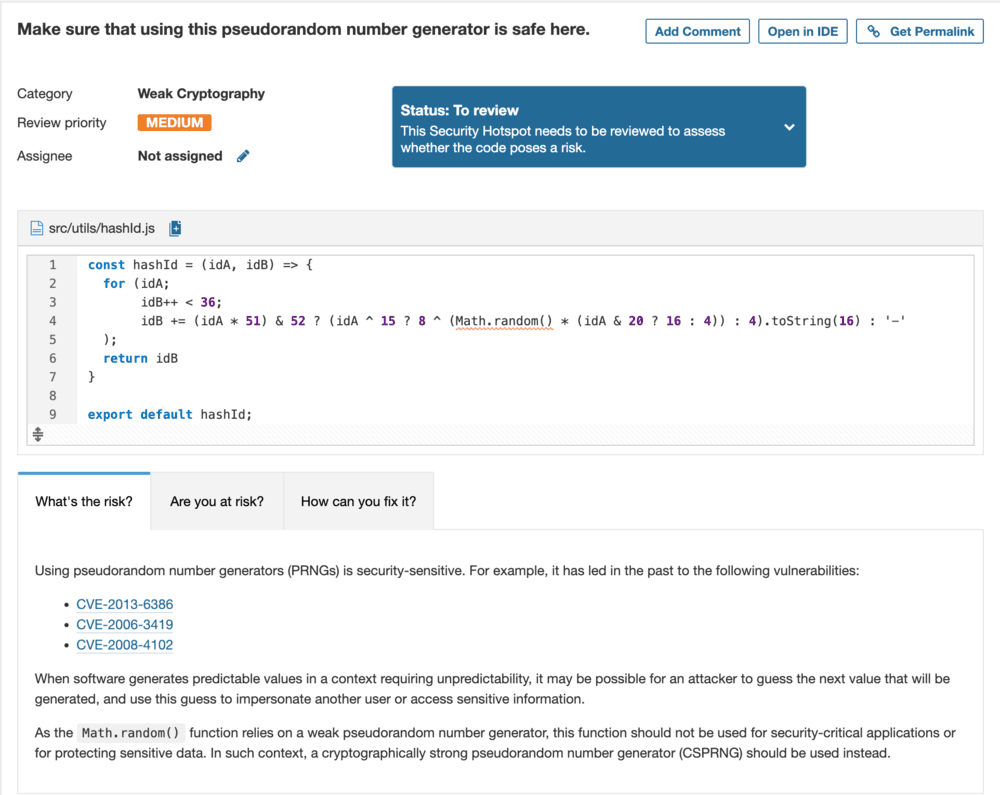
As you can see, we have a function that creates a string based on some
calculations and returns it. SonarQube identifies it as a function that
produces an encrypted version of some data, and it is unhappy with the use of
the Math.random method for generating a pseudo-random number. That is precisely
what the function is doing here.
Code Smells
Code smells are issues based on best practices and writing maintainable code. You can decide to ignore these issues if your team disagrees with it.
Let’s consider two examples from this particular report. Here is a typical example:
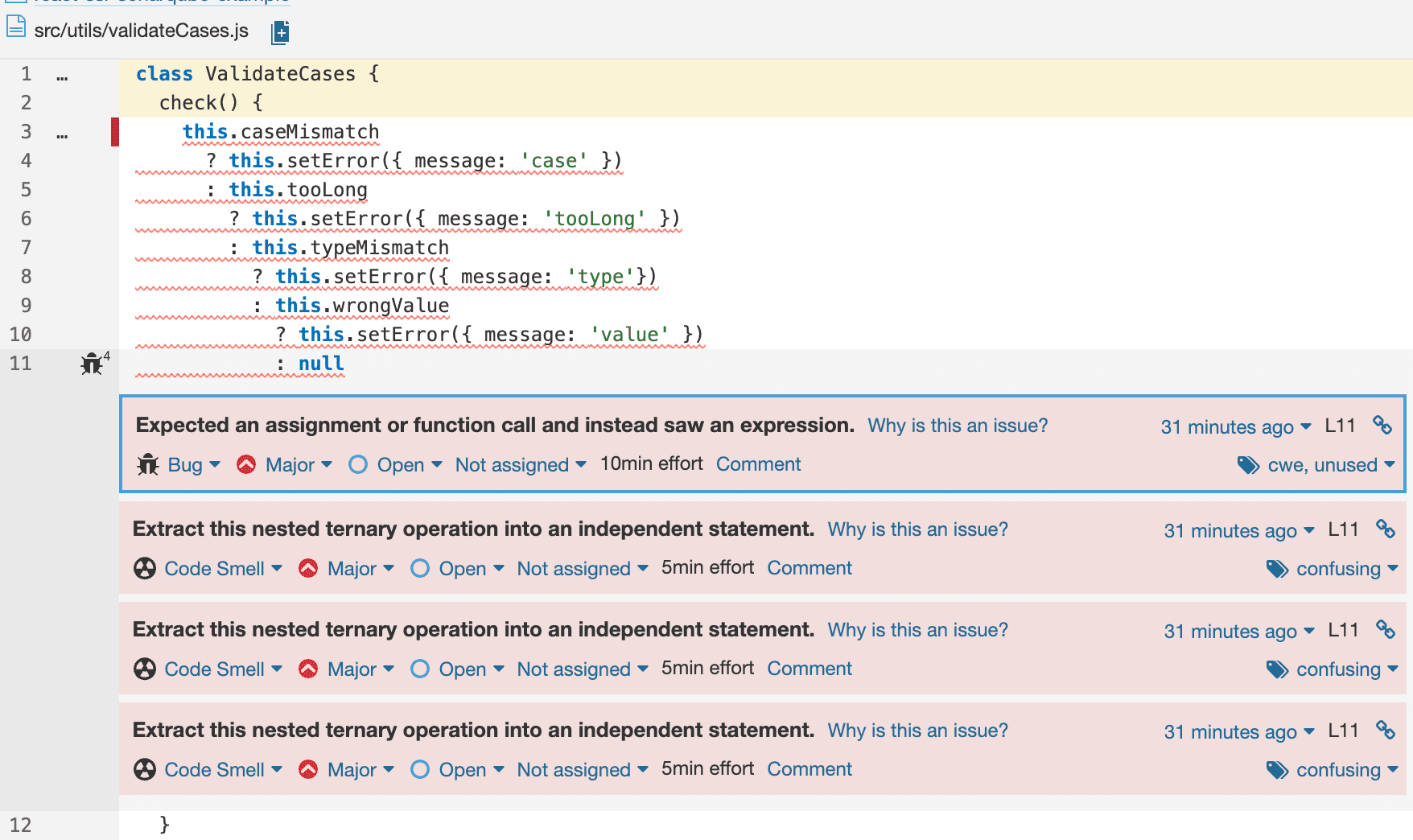
As shown in this screenshot, the approach to build this validation could be
refactored to make it easier to read and understand. SonarQube provides
reasonable suggestions to improve our code readability and maintainability.

This explanation sounds perfect to me :)
But let’s take a look at what is not so straightforward, at least to me:

The suggestion is the following:

If you don’t want these issues to appear in your SonarQube report, you have
several options to avoid inspection in particular places.
To ignore code blocks you can use this construction:
// BEGIN-NOSCAN
const someTrickyFunction = () => {
// ...
}
// END-NOSCAN
and to skip lines, there is a single-line construction:
// NOSONAR
const unusedVariable = 0;
More options can be found here .
Duplication
This feature allows you to keep your codebase as simple and small as possible.
It can show opportunities for you to refactor your project and simplify it by moving duplicated lines of code to separate functions that will be reused later.
Especially when it finds a method that isn’t covered by tests and has duplicates, this is an excellent opportunity for you to significantly improve your code by moving it into a separate function and covering that function with tests at the same time. This can even lead to creating standalone components, as you can figure out from the following screenshot.
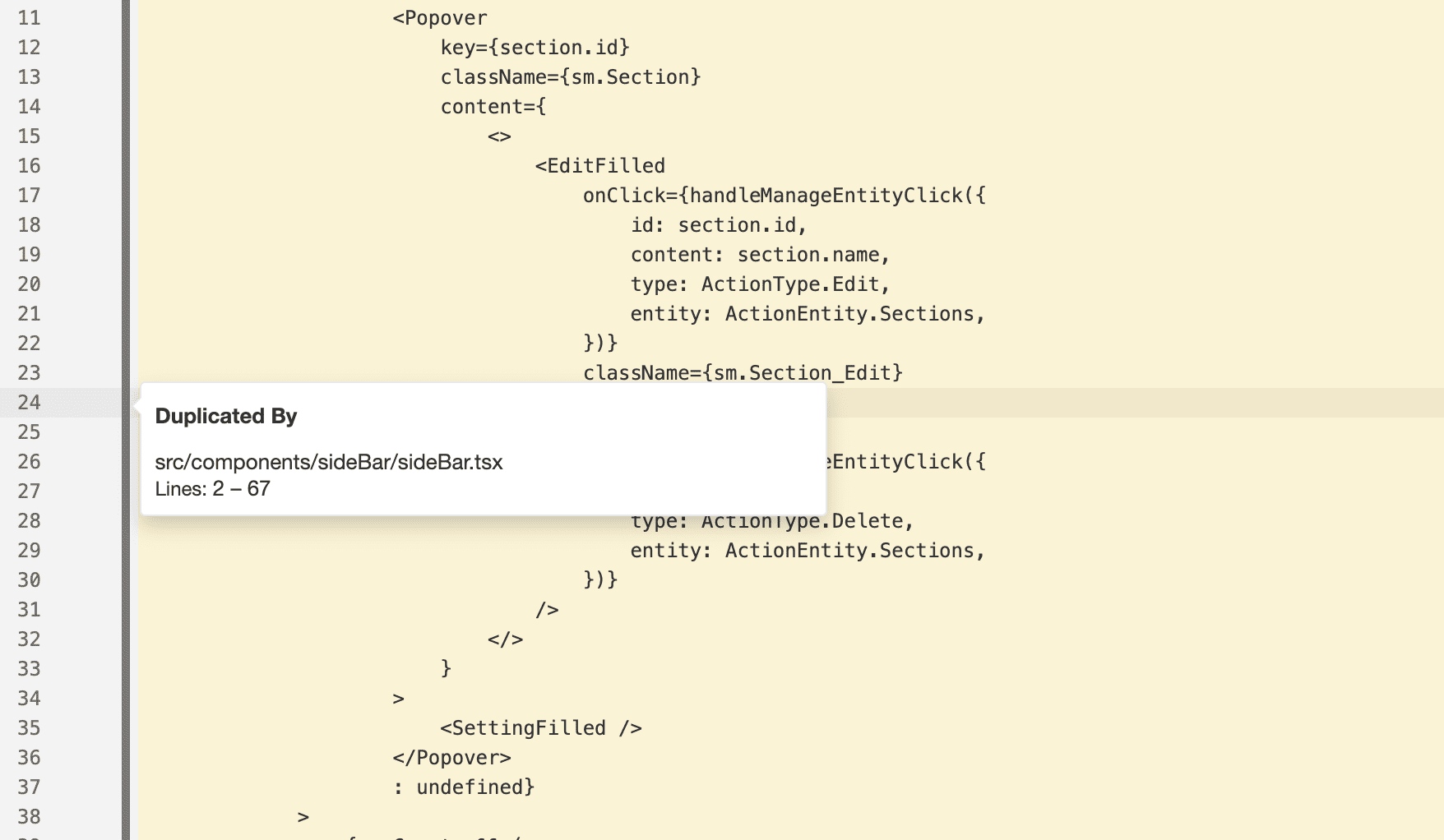
That’s it for the initial SonarQube report. Let’s move forward to take a look
at what SonarQube reports after our upgrade.
Statistics from the branch after the upgrade
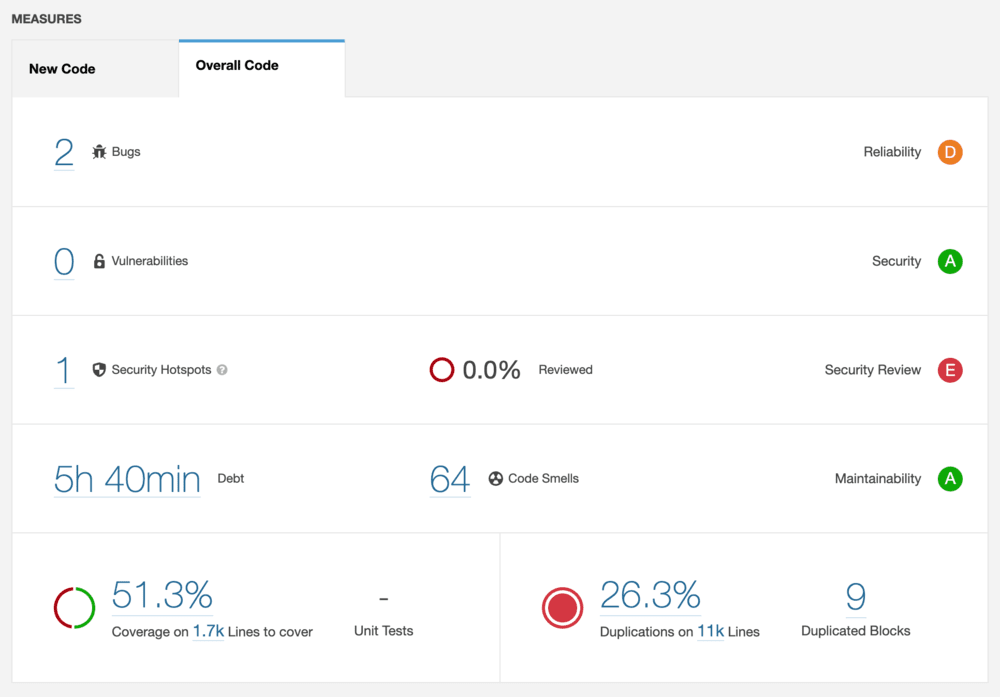
As you can see, the picture is not what we expected it to be. We have definitely made some great improvements to this codebase, but it still has a lot of opportunities for improvement.
Thanks to SonarQube we can keep track of the problems and gaps we have in our
application.
Duplication
Thanks to the original report, we were able to fix the Duplication issues during the upgrade of the app, and now this section shows no duplication issues.
Conclusion
The most exciting thing is that you can access many features shown in these
reports right from your IDE - SonarLint is your solution. It will analyze your
project files on the fly, suggesting improvements and flagging vulnerabilities
in your code.
SonarQube is an excellent tool to add to your tool belt, it helps you keep your
project up to date without vulnerabilities, duplication, and bugs!

